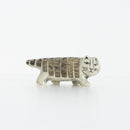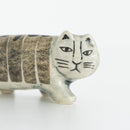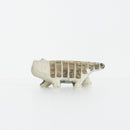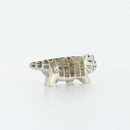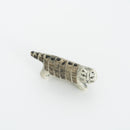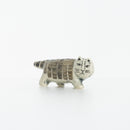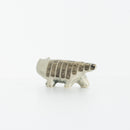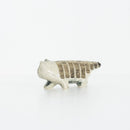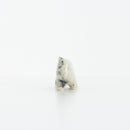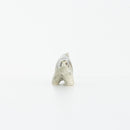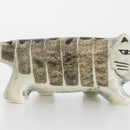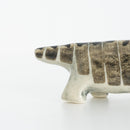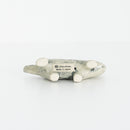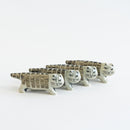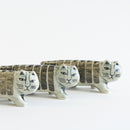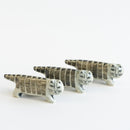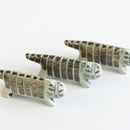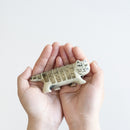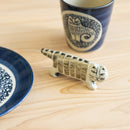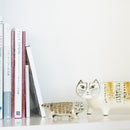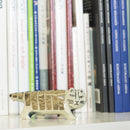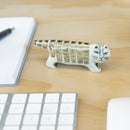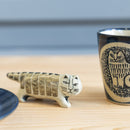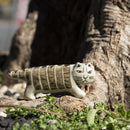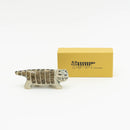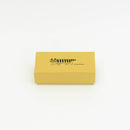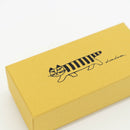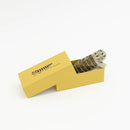Lisa Cat from Japan (First, Mashiko)
I am Masuko's Lisa cat. There is no name yet.
[About the product]
The "Lisa Neko of Japan" series travels to ceramic production areas all over Japan. The first one is a Mashiko-yaki cat from Tochigi Prefecture.

In the first place, this project would not have been born without my encounter with Mashiko ware. Lisa loves Mashiko ware, and we have been working on a variety of products at Mashiko since early on. Nippon Hedgehog is a blend of Mashiko-style flat plates and teacups, which have become a standard, as well as Mashiko and Swedish styles. ', such as 'Nippon'Lisa Larson"We've created this together. This is why I decided to ask for the most important top runner for "Nippon's Lisa Cat."

This time, "Lisa Cat from Japan" is deliberately made from Shigaraki soil, and is used as the base.InkA pigment called Sumigosu is applied and then rubbed to create a unique texture. The striped parts are painted with iron sand paint, and the face is painted one by one with a thinner brush. Finally, it is fired with a "Namijiroyu" one of Mashiko's traditional glazes. (※This glaze is clear when baked, so you can enjoy the atmosphere of the earthen skin and paint.)

[About design]
We made it so that it doesn't lose the wildness of Lisa's prototype, like a stray cat. Therefore, there were unevenness and scuffs on the paint on the body, and the face was hand-painted, so that the craftsman's feelings were reflected in the expressions, and the individual differences were revealed as individuality.

[About Lisa Cat from Japan]
Lisa loved Japanese pottery. That's why I've had the idea of trying to make Lisa's works at potterys all over Japan for a long time. And finally, with "Nippon's Lisa Cat" that will come true! This cat was made from Mashiko ware and then crossed pottery across Japan.
[Caution]
Each item is hand-crafted by a craftsman, so there are individual differences in expression, pattern, color, and size. Enjoy it as your individuality.

[From the staff]
I was with this girl for the whole time because of the filming. It fits easily in any place, whether on a desk, in your pocket. He looks like he's been there for a long time. Is this a stray cat spirit? (Photographer S)
Stray cats are strong, independent, free and admiring. It's touching to think that Lisa's cat has finally become an indigenous Japanese cat. (Designer S)
Lisa said she used seal ceramics to push points, but this girl's tail and ears are great for pushing points. It feels good. (Shop staff M)
[What is Mashiko ware?]
Pottery produced around Mashiko Town, Haga District, Tochigi Prefecture. Mashiko is said to be the mecca of modern ceramics. In 1924, Hamada Shoji settled and built a pottery kiln, attracting attention not only in Japan but also in the world of ceramics. Since stone powder and old iron powder are glazed and colored with a dog hair brush, it has a heavy color and a subtle feel to the touch.

[Lisa and Mashiko ware]
One day in the 1950s, Lisa visited Japan and met Hamada Shoji, a living national treasure who spread Mashiko yakitori, and learned about Japanese pottery. Since then, Lisa has been deeply interested in Japanese culture and has dreamed of one day creating Mashiko ware works. The works produced in Sweden have been heavily influenced by Japanese pottery, including Masuko.































